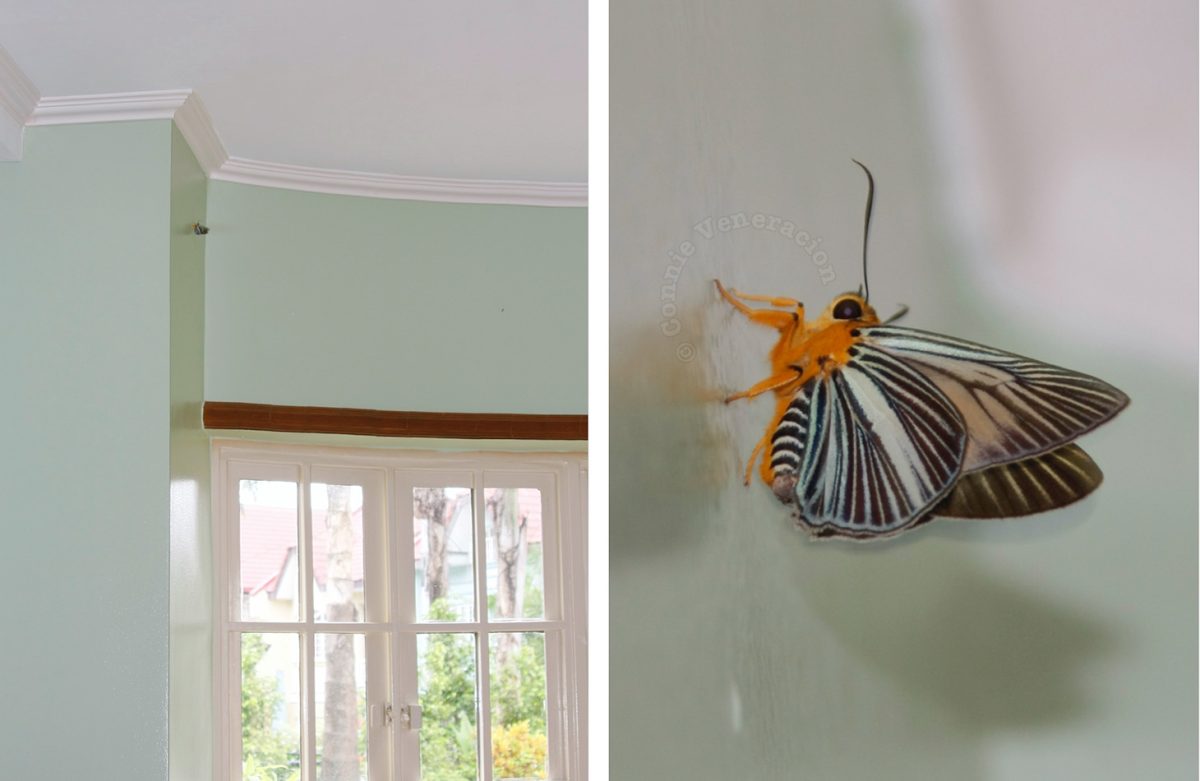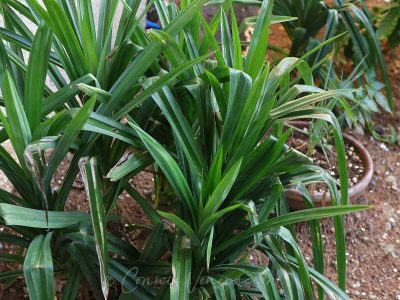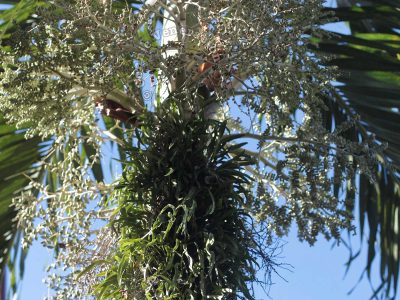We live in a hilly suburb and that means we live with all kinds of critters (and, occasionally, even bats) that inhabit the outdoors.
We get a lot of butterflies and moths; some are dull-colored, others look like flying rainbows, some are tiny while others are almost as large as my palm. At night, they enter the house and chase after the lights.
They’re particularly friendly with my daughter, Sam, who can woo them to alight on her hand. We’ve always believed that having moths was a good thing—a sign that the air is still unpolluted enough that insects could live in out midst.
If you remember your grade school biology, moths aren’t born with wings. There are four stages in the life cycle of butterflies and moths.
The Life Cycle of Butterflies and Moths
1. Butterflies and moths lay eggs on plants.
2. The eggs hatch and the larva stage begins. The caterpillar is the larva. It is tiny as the egg hatches but it grows fast. All it does is eat — leaves, mostly, although some species eat smaller insects too.
3. When the caterpillars have sufficiently fed, it forms a cocoon around itself. The larva now becomes a pupa and the metamorphosis begins. The transition from the worm-like caterpillar into an adult winged butterfly or moth happens inside the cocoon.
4. When the metamorphosis is complete, the butterfly or moth emerges from the cocoon.
We know that all that happens in our garden although, most of the time, it goes unnoticed.
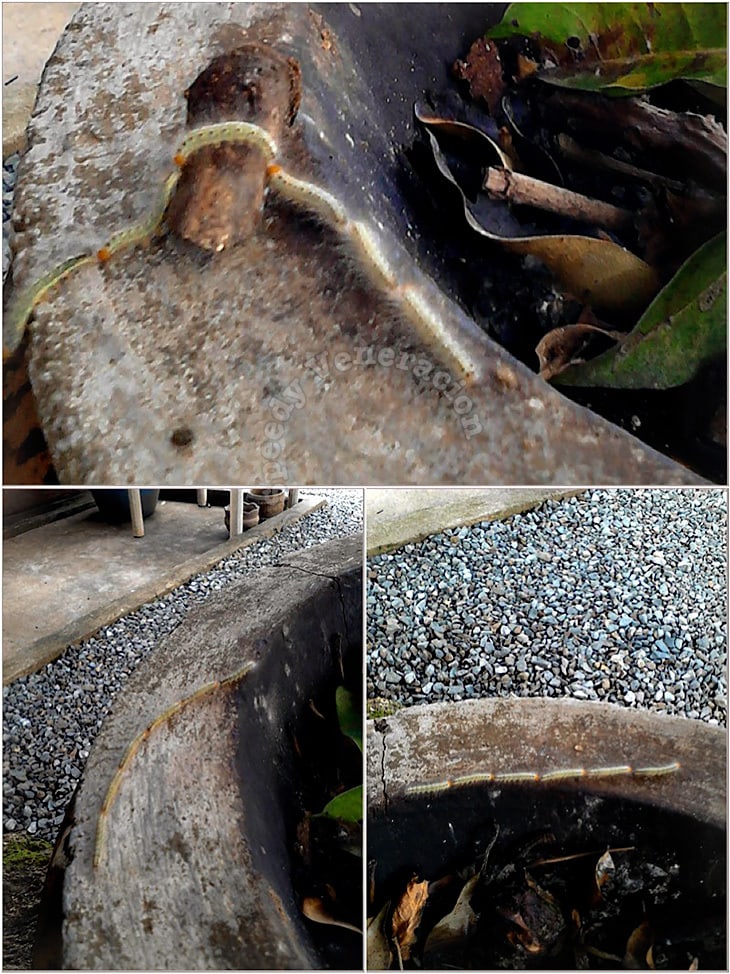 After lunch one day, however, we noticed. Alex was preparing pots to start replanting herbs and, as she tried to reach for one under the lagundi tree, she shrieked, “Higad!” That’s the Filipino word for hairy caterpillars. When your skin gets in contact with them, you can get a bad rash. Speedy said we should have seen how they moved like a train earlier in the day.
After lunch one day, however, we noticed. Alex was preparing pots to start replanting herbs and, as she tried to reach for one under the lagundi tree, she shrieked, “Higad!” That’s the Filipino word for hairy caterpillars. When your skin gets in contact with them, you can get a bad rash. Speedy said we should have seen how they moved like a train earlier in the day.
For a family keen on growing herbs and vegetables, the presence of caterpillars in the garden can be problematic. They are voracious eaters and when they attach themselves to a plant whose leaves we eat as food or boil to make herbal drinks, we get to harvest so much less.
That the caterpillars chose to inhabit the lagundi tree bothered me because we brew the leaves to treat cough and allergy. Should we spray them with insecticide?
The Pros of Getting Rid of Caterpillars
That should be a no-brainer. Getting rid the caterpillars means we get rid of the competition for the leaves that we want to harvest for food.
It also means that if we wander into the garden while still half-awake, there’s less chance that we’d bump into them and develop rashes that can be as itchy as hell.
The Cons of Getting Rid of Caterpillars
But much as we hate how the caterpillars are stealing our food, we need butterflies and moths to help pollinate our plants. That’s what they do as adults.
Plus, beautiful brightly-colored butterflies are such a lovely sight to behold. I have no words to properly express the feeling when I sit out there in the garden, sipping coffee or a cocktail, and butterflies fly by and alight on flowers to sip nectar. It’s one of those little things that makes us love the suburbs.
We left the caterpillars where they were. There weren’t so many to completely strip the lagundi tree of leaves. According toone article, “Tree mortality due to this pest is rare…”The lagundi tree is large enough to feed them.
Meanwhile, I did a little snooping on what we should do if our skin gets in contact with the hairy critters.
What To Do In Case of Higad Attack
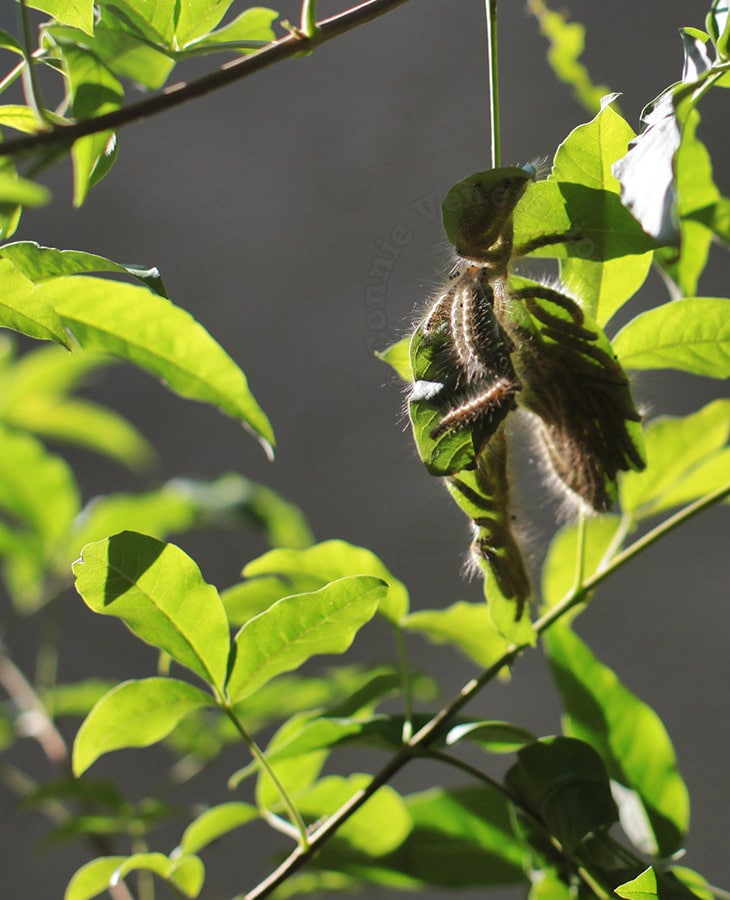 First, remember that an ounce of prevention is worth a pound of cure. DO NOT touch the caterpillars. They are harmless but if those tiny hairs prick your skin, you’re in trouble. The rashes that develop from the contact can be both painful and itchy.
First, remember that an ounce of prevention is worth a pound of cure. DO NOT touch the caterpillars. They are harmless but if those tiny hairs prick your skin, you’re in trouble. The rashes that develop from the contact can be both painful and itchy.
There are many popular remedies that range fromapplying vinegarto urine to pouring melted wax candle over the affected area. Vinegar and urine, both acidic, is meant to open up the pores to remove any caterpillar hairs that may still be attached to the skin. As for the candle wax, the hairs are suppose to attach to the wax so that when the hardened wax is peeled off, the caterpillar hairs should go with it.
Vinegar over rashes can be painful.
Urine on my skin? Gee, really? Who thought of that?
Melted wax… Can you imagine how painful that is? The wax may get rid of caterpillar hairs but that will give you a new set of rashes from the heat.
What’s the better first aid forhigadattack?
First, clean the affected area with soap and water then apply alcohol or ammonia.
Second, place adhesive tape over the affected area then pull off to remove any caterpillar hairs that may still be attached to the skin. It is recommended that you do this several times.
To relieve itchiness, place an ice pack on the rashes. Taking anti-histamine may also help; I recommend lagundi brew.

